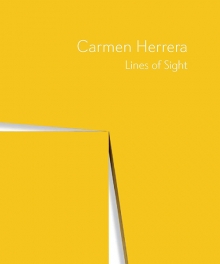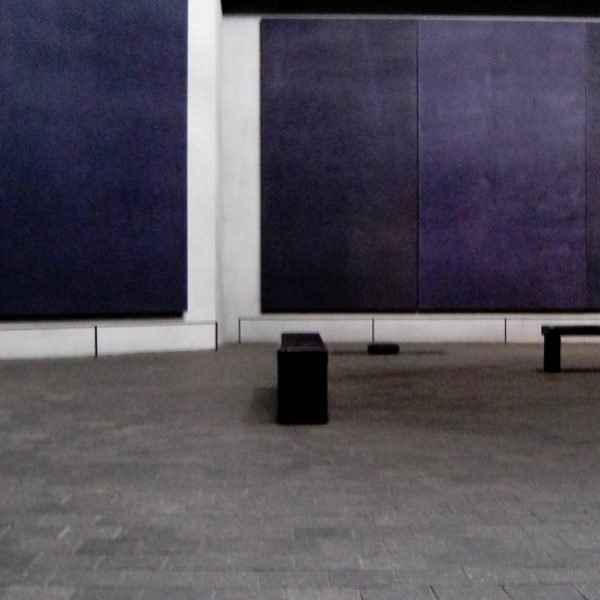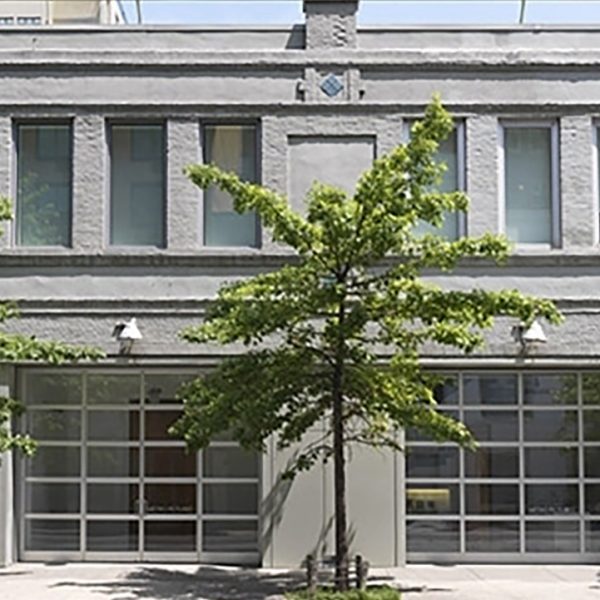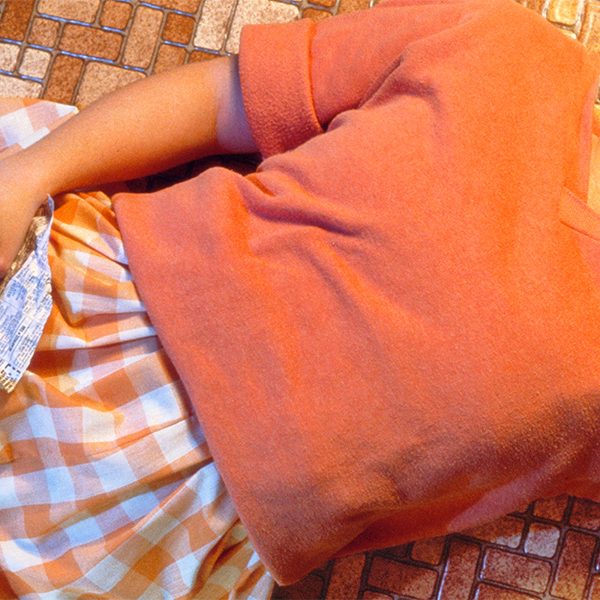An interview with Dana Miller, curator of Carmen Herrera: Lines of Sight
Ivy Sanders Schneider–
Carmen Herrera, who will celebrate her 102nd birthday this year, is finally a household name. Born in Havana, Cuba, Herrera has lived and worked in New York for over sixty years, but sold her first piece of art in 2002. She had her first major retrospective last fall, at the Whitney Museum of American Art, at the age of 101.
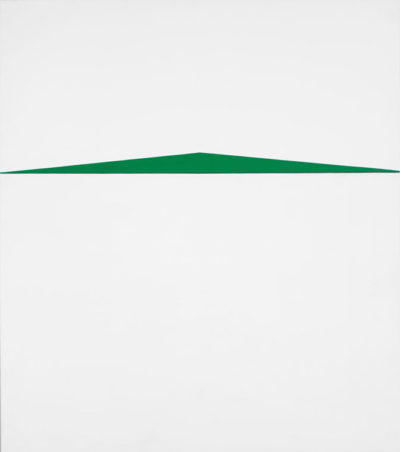
Blanco y Verde, 1959. Acrylic on canvas. Whitney Museum of American Art, New York; purchase, with funds from the Painting and Sculpture Committee 2014.63 © Carmen Herrera; courtesy Lisson Gallery, London
The show, now on view at the Wexner Center for the Arts in Columbus, Ohio, and the accompanying book, distributed by Yale University Press, focused on her early work, from 1948 to 1978, showcasing her innovations in abstraction and demonstrating how she arrived at her signature hard-edge abstraction. The dates are particularly striking when you consider that some of her major (and until recently underappreciated) works were created at the same time, or years before, many of her contemporaries in abstraction began similar experiments with color and form.
Ellsworth Kelly’s South Ferry (1956) and Jersey (1958), for example, featured explorations with hard lines and angles and large geometric blocks of color, all while working to minimize evidence of the artist’s hand. Herrera’s series Blanco y Verde, which she began in 1959, received virtually no critical recognition, whereas between 1951 and 1960, Kelly participated in four major shows (including a solo exhibition) in New York alone. I offer this example “as context, if not comparison” (as curator Dana Miller writes in her introductory essay to the book Carmen Herrera: Lines of Sight), simply to illustrate that the case was not that the world was not ready for geometric, sculptural abstraction; the world was simply not ready for Ms. Herrera.
I was lucky enough to visit the exhibition during its run at the Whitney, and interview the curator, Dana Miller, on how the show came together, why it took Herrera so long to gain recognition, and what Miller hopes Herrera’s legacy will be. Miller proposed curating the exhibition in the spring of 2014, after researching Herrera in an effort to acquire the Whitney’s first Herrera painting. It was during this time, seeing as many of Herrera paintings as she possibly could, that Miller “realized Herrera’s contributions warranted a major exhibition.” While the museum usually schedules exhibitions three to four years in advance, and the exhibition calendar was essentially full through 2018, there was an available 8th floor gallery in Fall 2016, just two years away. Although the exhibition was scheduled with a relatively short lead time, Miller explained, “it was important to me that I would be able to work with Carmen on the exhibition and have her see the finished result, and to be frank, I was concerned that time was not on my side.”
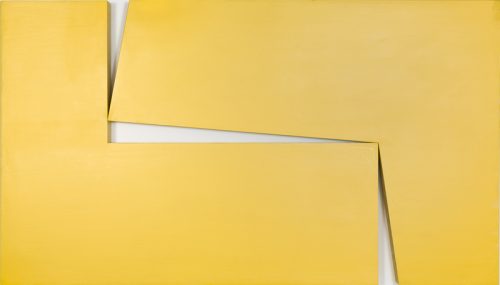
Amarillo “Dos”, 1971. Acrylic on wood. Maria Graciela and Luis Alfonso Oberto Collection © Carmen Herrera; photograph by Chi Lam.
Regarding the scope of the project (thirty years from the beginning of Herrera’s career to the solidification of her artistic identity), Miller explains “this way, the audience can see her work as she is developing her signature style of abstraction and honing it and distilling it.” By stretching the exhibition to 1978, Herrera’s Estructuras, from the late 60s and 70s, could also be included, which Miller believes “are essential to understanding her work.” The latest pieces in the exhibition, Days of the Week, from 1978, are arranged on a wall right outside the main exhibition room. They are the first thing viewers see as they enter, the last thing they see as they leave. Miller included these works because she sees them as “among [Herrera’s] strongest bodies of work from the late 1970s,” and because “they work as a bookend of sorts, representing a powerful and complete thought.”
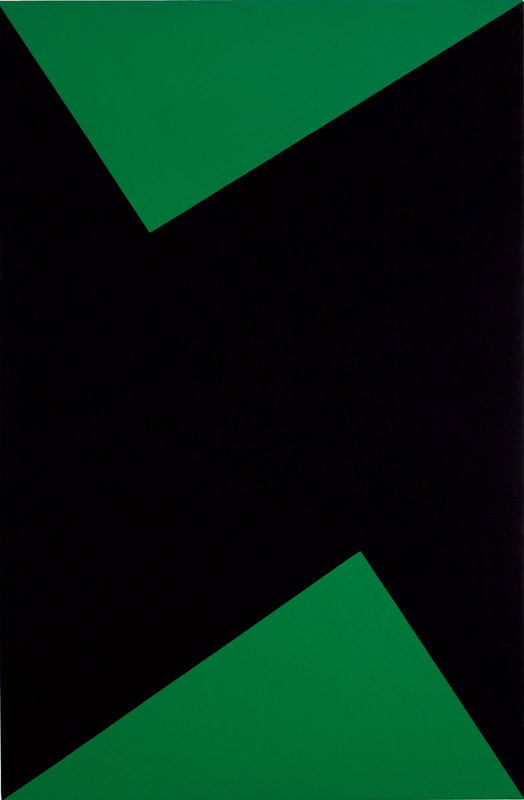
Wednesday, 1978. Acrylic on canvas. Museum Pfalzgalerie Kaiserslautern, Germany, M 12-346. Photograph courtesy Lisson Gallery © Carmen Herrera
Although Herrera had a 1984 retrospective at the Alternative Museum, she continued to be overlooked for the next twenty years. When I asked Miller why she thought this oversight continued to occur, Miller speculated that “as wonderful an institution as the Alternative Museum was while it existed, it was exactly that, an alternative space, off the beaten path.” She continued, “sadly enough, I don’t think the art world was ready to receive her work, even in 1984.” Miller thinks “many of the prejudices that dogged her early in her career–as a woman, as an immigrant, as a Cuban–continued to be present.”
Regarding Herrera’s future inclusion in the art historical canon, Miller hopes “Herrera will be regarded as one of the foremost abstractionists of the 20th century alongside contemporaries such as Barnett Newman, Ellsworth Kelly, Agnes Martin, and Frank Stella. And I hope that she begins to be included in the art history books, appearing at the moment when first made her groundbreaking painterly innovations, in the late 1940s and early 1950s.” She was heartened to see critics reviewing the show at the Whitney who had overlooked Herrera’s work in the 1980s, and in their reviews “addressed their own blind spots.” Although many reviews of the show focused on Herrera’s late “discovery,” for Miller “this is not the most interesting part of the story. It’s her art that merits attention, and I hope the textbooks will focus on the work itself.”
Carmen Herrera: Lines of Sight is on view at the Wexner Center for the Arts in Ohio from February 4th to April 16th, 2017. The accompanying book, edited by curator Dana Miller, is available here.
Ivy Sanders Schneider, a senior English major in Yale College, is an art & architecture intern at Yale University Press.
























